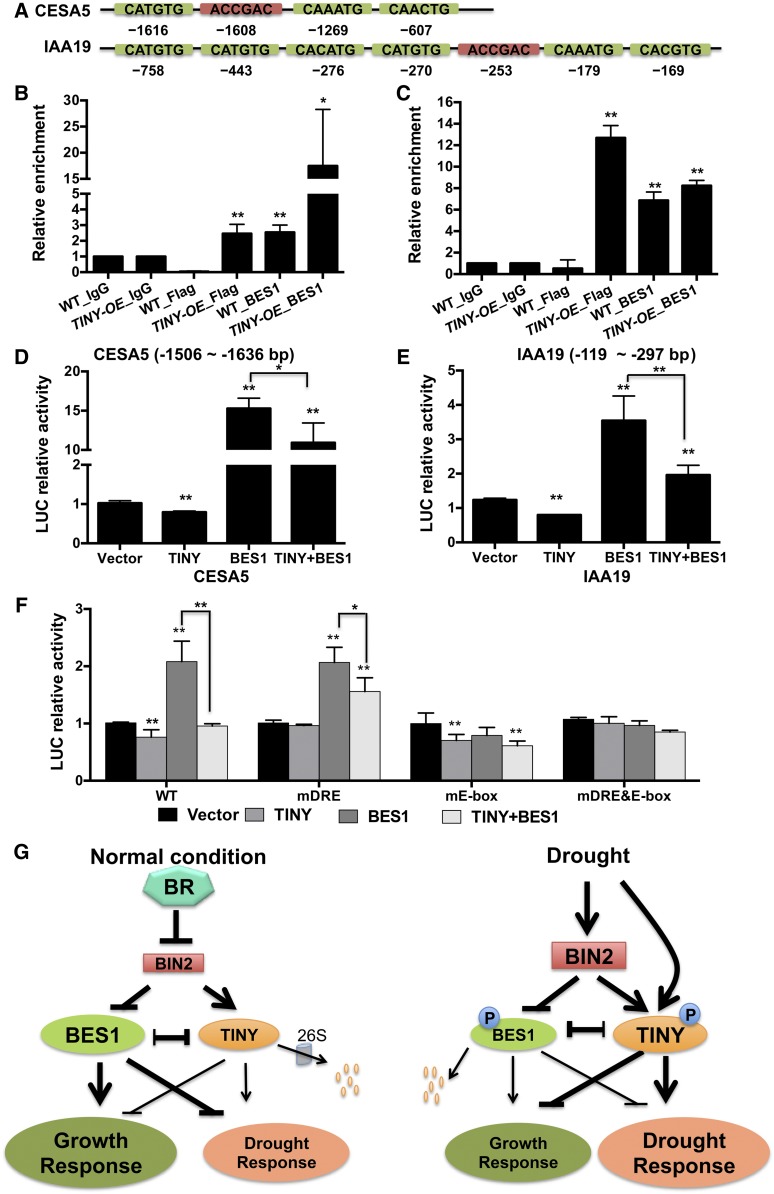Figure 7.
TINY and BES1 Antagonistically Regulate BR-Induced Growth-Related Genes.
(A) Schematic diagram of the promoter region of CESA5 and IAA19.
(B) and (C) TINY and BES1 enriched on CESA5 (B) and IAA19 (C) promoter in ChIP assay. Data represent mean and sd from three biological replicates (n = 3), with each replicate containing pooled tissue from three to four individual plants. *P < 0.05, **P < 0.01; Student’s t test. WT, wild type.
(D) to (F) Transient LUC reporter assays with indicated promoter:LUC reporters were performed in N. benthamiana leaves with TINY and/or BES1 effector. LUC relative activities were normalized with total protein and control. Data represent mean and sd from three to five biological replicates (n = 3 to 5). Each biological replicate was comprised of five 7-mm leaf discs from one leaf. *P < 0.05, **P < 0.01; Student’s t test.
(G) A working model for TINY in BR-regulated plant growth and drought response. TINY inhibits plant growth and promotes drought response. Under normal condition (left), BR promotes TINY degradation although BIN2 phosphorylation and 26S proteasome pathway to alleviate TINY’s inhibitory effect on BR-induced plant growth. BR-induced accumulation of BES1 also inhibits TINY activation of drought-responsive genes to further facilitate plant growth. Under drought condition (right), TINY is induced at transcriptional level to promote drought response and inhibit plant growth by inhibiting BES1 functions. Stresses and ABA-activated BIN2, in turn, stabilize and enforce TINY function.

